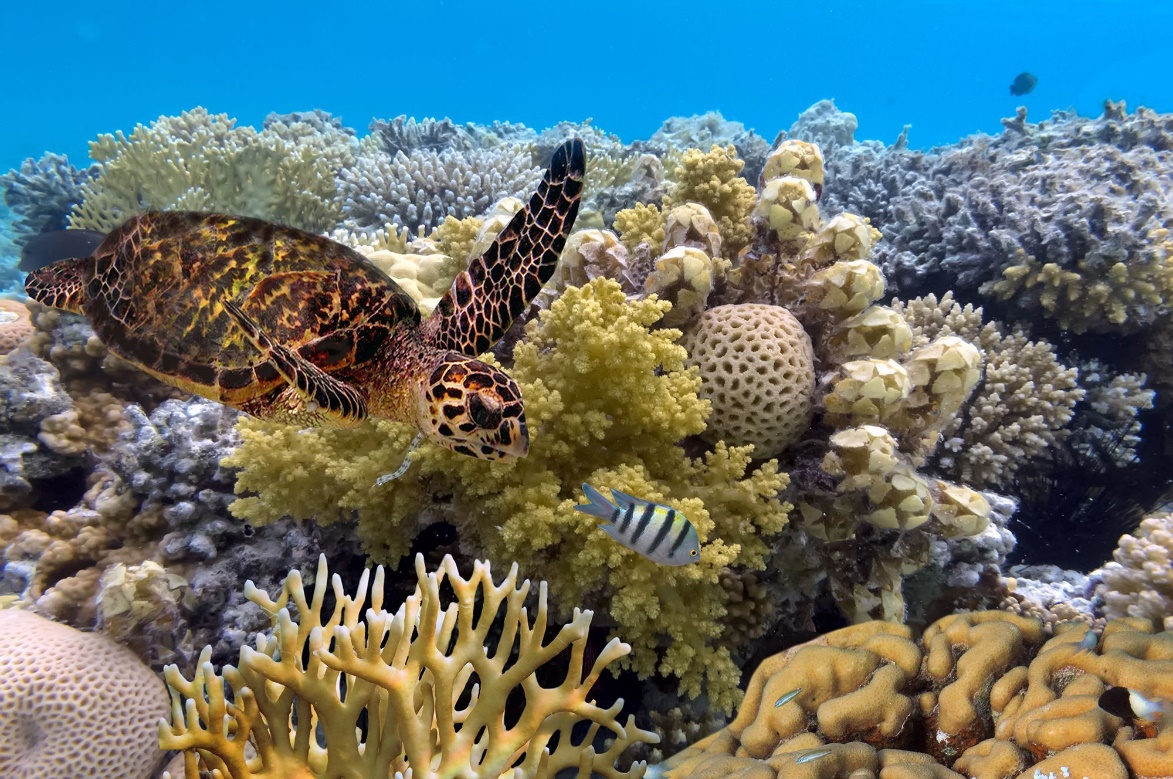

02/11/2021
Coral reefs are at risk of being completely wiped by 2050 as some scientists have estimated. Coral reefs play a significant role in ocean habitats and the ecosystem for marine life. But they have suffered devastating and possibly irreversible, effects within the last few decades due a number of man-made activities and influence. Overfishing, plastic pollution, rising global temperatures and coastal developments all have a hand in the degradation of coral reefs around the world.
The combination of these human factors has resulted in a mass phenomenon of coral bleaching, which is what happens when rising ocean temperatures disrupt the symbiotic relationship between the reefs and algae that lives within it, driving away the algae and causing coral reefs to lose its vibrant colours. The longer temperatures remain high, the more difficult it will be for algae to return and impossible for reefs to be revived. Warmer waters also lead to ocean acidification, preventing coral reefs the ability to rebuild its exoskeletons.
Some coral reefs are more resilient than others. The corals in the Gulf of at the Northernmost tip of the Red Sea have been found to develop higher thresholds in withstanding warmer temperatures than others. However, most systems have been hit hard by the effects of climate change and are now some of world’s most threatened coral reefs.
Great Barrier Reef

The Great Barrier Reef is the most severely affected reef in the world by coral bleaching and climate change
The largest and longest reef system in the world, the Great Barrier Reef has also experienced some of the most severe effects caused by coral bleaching and climate change. The most notable mass bleaching events occurred in 2016 and 2017 and a stunning 50% of Australia’s famous reef died as a result. While major efforts have since been put in place to reduce coral bleaching, the scale of mortality has proven difficult for the reef system to regrow and replenish.
Indonesia

Up to 95% of coral reefs in Southeast Asia are currently under threat. Plastic pollution and overfishing are particularly severe in the region, the corresponding stresses and pressures on the health of coral reefs are equally high. As plastic pollution piles up, it can suffocate and restrict sunlight access towards the reefs. A 2017 study conducted on the Melinjo Islands found that the average coral cover was down to 22.2%. Scientists estimate that with worsening ocean acidification, only 15% coral reefs in the region will have the adequate ability for coral growth by 2050.
Pacific Ocean
The longest and most destructive coral bleaching event occurred between 2014 and 2017 caused by a climate phenomenon known as El Niño, where warming surface waters arrive over the central and eastern equatorial Pacific Ocean. During that period of time, it was estimated that over 70% of the world’s coral reefs were affected and experienced permanent damage. El Niño occurs every three to seven years, which has both short- and long-term concerns for reef systems in the Pacific Ocean varying from the frequency of coral bleaching to the time span reefs need to revitalise.
Hawaii
A number of reef systems in Maui have recorded a loss of nearly 25% of living coral between 1994 and 2006, with the most notable example being Honolua Bay where its coral cover dropped from 42% to 9%. The dramatic decline of coral can be linked back to human activities. However, local governments have since taken various measures to revitalise and protect its reef systems including banning the use of sunscreens that contain oxybenzone and octinoxate, which are chemicals that cause coral bleaching and other harmful impacts.
Caribbean
Despite coral reefs being the main attraction for tourism in the Caribbean, the health of its reef systems has increasingly declined. A study conducted by the World Resources Institute has found that “nearly two-thirds of coral reefs in the Caribbean are threatened by human activities while an estimated one-third is threatened by coastal development” such as construction and sewage discharge. Furthermore, overfishing in the region contributes 60% of the reef’s health.
Bảo Bình
(Source: Vietnam Environment Administration Magazine, English Edition III - 2021)